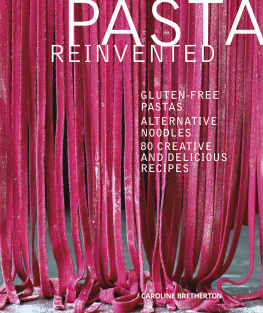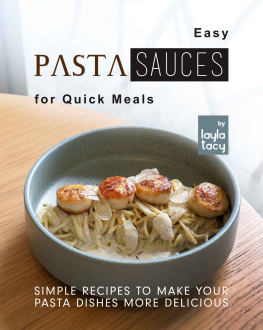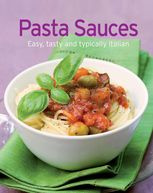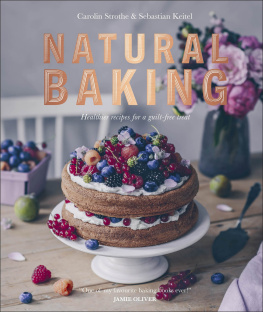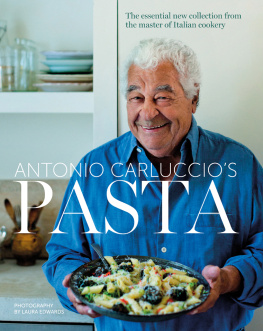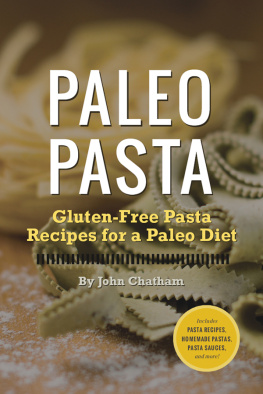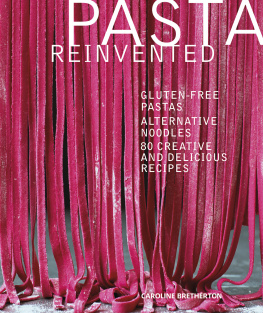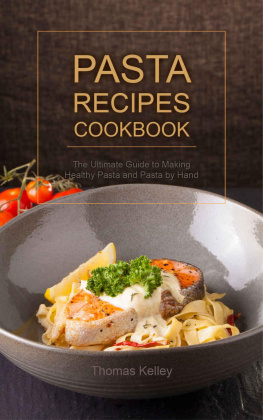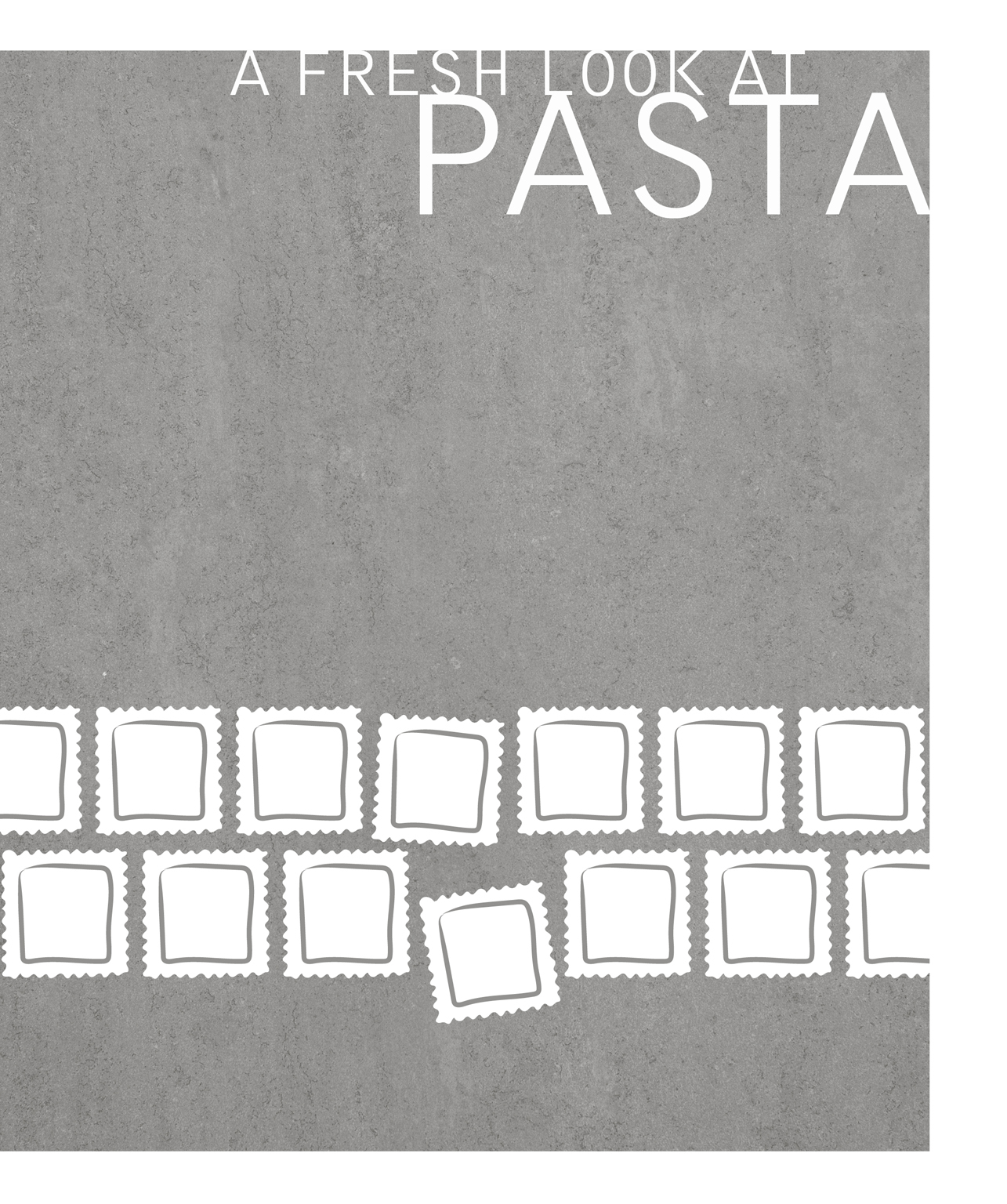Contents
Guide
WHY CHOOSE ALTERNATIVE PASTAS?
Using non-traditional alternatives in pasta and noodle dishes offers complex textures alongside sophisticated and comforting flavours, as well as nutritional benefits for low-carb and gluten-free diets, without compromising on taste.
EXPLORE NEW FLAVOURS & TEXTURES
Non-traditional ingredients add new dimensions of texture and flavour to pasta dishes, from crisp vegetable noodles to earthy pulse pastas. Less-familiar Asian noodle varieties, such as clear, crunchy kelp noodles and slippery, snappy shirataki, also offer new and unusual textures. The recipes in this book showcase the qualities of alternative pastas that make them unique, highlighting their distinctive flavours and textures with sophisticated sauces and thoughtfully paired ingredients.
EAT FEWER CARBOHYDRATES
You may be trying to cut back on carbs but still crave the comfort of a big bowl of pasta. Many pasta alternatives deliver all the satisfaction of your favourite dishes, but with far fewer carbs. Transform fresh vegetables into pasta-like ribbons, or seek out noodles made from sweet potatoes, rice, edamame, and mung beans all ideal for those who want to limit carb-heavy grains. These lighter alternatives are equally delicious and satisfying, so you can enjoy your comfort food without the carb-guilt.
GET MORE NUTRITIONAL VALUE
Compared to their wheat-based counterparts, many alternative pastas provide more protein, fibre, and nutrients per serving. Pulse-based pastas, such as those made from lentils and beans, have about twice as much protein as traditional pasta and three times the fibre. Pastas made from alternative grains are often more nutritionally dense than wheat-based pasta, while noodles made from fresh, raw vegetables are loaded with essential vitamins and minerals.
GO GLUTEN FREE
As more and more people eliminate gluten from their diets, the health-food market has responded with a growing number of gluten-free options, including packaged pastas as well as gluten-free flours that you can use to make your own pasta dough. The recipes in this book show you how to use these new offerings to their best advantage, with seven gluten-free pasta dough recipes and many delicious dishes that feature different varieties of dried, shop-bought, gluten-free pasta.
THE PASTA POSSIBILITIES
The many types of alternative pastas and noodles are as colourful and varied as the ingredients from which they are made. Vegetables, beans, and unusual grains replicate traditional pasta shapes, but have their own unique flavours and textures.
ALTERNATIVE GRAIN & NUT PASTAS
There are a number of widely available grain flours many without gluten that can add new flavour dimensions to your pastas. Some alternative grains, such as einkorn, buckwheat, and rye, make rustic, earthy pastas, while others, such as rice and quinoa, are lighter and more delicate. Grain flour may be blended with a nut flour, such as almond meal or chestnut meal, for added flavour and texture. Look for packaged pastas at your health-food shop; they are available in many traditional Italian pasta shapes and may be made with a blend of alternative flours, such as cornmeal and quinoa. Asian markets are a good source for noodles made with alternative grains, such as buckwheat and rice.
PULSE PASTAS
Flour made from dried beans, peas, chickpeas, or lentils can serve as a flavoursome and nutrient-rich base for home-made pasta doughs, bringing all the healthy and delicious qualities of pulses to your pasta dishes. You can also find many varieties of pulse pastas at health-food shops; these dried, packaged products often contain only one ingredient such as black bean flour and taste like the pulse from which they are made.
WATER-PACKED NOODLES
Two alternative noodle varieties come packaged in a water-filled plastic pouch kelp noodles (made only of kelp), and shirataki noodles (made of yam starch). Both are traditionally used in Japanese cooking and have a very mild flavour that makes them perfect for soaking up spicy sauces. Because they are gluten-free and nearly carb-free, these noodles have become more popular and widely available in recent years. They can usually be found in the refrigerated section of the supermarket, near the soy products such as tofu and tempeh.
VEGETABLE NOODLES
Fresh produce such as courgettes and yellow squash create healthy pasta replacements these are tender and hold their shape well when cooked, and are also mild in flavour, allowing sauces and other ingredients to shine. More flavoursome vegetables such as beetroots, butternut squash, carrots, and sweet potatoes can also stand in for pasta, and bring stunning colour to the finished dish. There are a number of preparation methods that can transform your vegetables into attractive ribbons, long spirals, or sheet-like slices.
ALTERNATIVE GRAIN PASTAS
Many of the pastas in this book are based on flours made from ancient or unusual grains. Most are gluten free, and all bring their own unique flavours, textures, and nutrients to the finished dish.
BUCKWHEAT
This gluten-free grain is ground into a dark, speckled flour that has a rich, assertive flavour. You can make home-made buckwheat flour dough, or find dried shop-bought varieties. Whether you want to prepare it Asian- or Italian- style, buckwheat creates a dense and nutty pasta thats best suited to lighter sauces. At Asian markets, look for 100 per cent buckwheat soba noodles for the most nutrition and flavour.
SWEETCORN
Whole sweetcorn kernels can be ground into a slightly sweet and wonderfully flavoursome flour that makes a delicate home-made dough. Cornmeal flour is used in packaged gluten-free pastas as well often as part of a grain blend, such as quinoa and corn and can be found in shapes such as orzo, elbows, and shells.
EINKORN
This ancient wheat variety is high in protein, fatty acids, and other essential nutrients. Although it does contain gluten, it is considered to be more easily digestible than modern wheat varieties for those with gluten sensitivity. Einkorn pastas are available in a variety of shapes, and the mildly sweet and slightly nutty flavour works perfectly with a range of dishes.
MILLET
Wholegrain millet has a subtle flavour that creates a lovely, mild flour. The cream-coloured, gluten-free grain is an easily digestible source of fibre, protein, amino acids, and other nutrients. Whether you are using dried millet pasta or making lasagne sheets from millet flour dough, its mild taste enhances the other ingredients in your dish. Look for options such as millet spaghetti or millet and rice spirals.
OAT
Subtle and sweet, gluten-free whole oats can be milled to make a hearty flour that is a good source of dietary fibre and protein, and also helps to reduce cholesterol levels for heart health. Look for oat noodles which usually contain a blend of wheat flour and oat flour at Asian markets.

